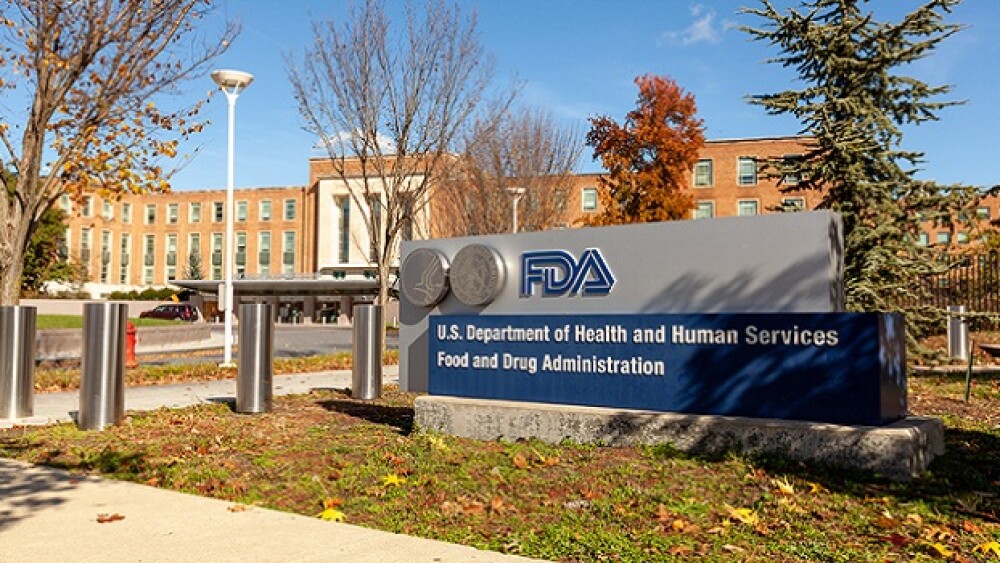Anavex Life Sciences Corp. today announced positive topline results from its Phase 2b/3 ANAVEX®2-73-AD-004 clinical trial of oral ANAVEX®2-73 (blarcamesine) for the treatment of mild cognitive impairment (MCI) due to Alzheimer’s disease.
- Robust, Statistically Significant and Clinically Meaningful Absolute Improvement in Cognitive Function as Measured by ADAS-Cog and ADCS-ADL
- Key Secondary Endpoint CDR-SB Also Met, Demonstrating Statistically Significant Results
- Plan to Meet with Regulatory Authorities to Determine Next Steps
NEW YORK, Dec. 01, 2022 (GLOBE NEWSWIRE) -- Anavex Life Sciences Corp. (“Anavex” or the “Company”) (Nasdaq: AVXL), a clinical-stage biopharmaceutical company developing differentiated therapeutics for the treatment of neurodegenerative and neurodevelopmental disorders including Alzheimer’s disease, Parkinson’s disease, Rett syndrome and other central nervous system (CNS) disorders, today announced positive topline results from its Phase 2b/3 ANAVEX®2-73-AD-004 clinical trial of oral ANAVEX®2-73 (blarcamesine) for the treatment of mild cognitive impairment (MCI) due to Alzheimer’s disease (AD) and mild AD (collectively known as early AD). ANAVEX®2-73 met the primary endpoints ADAS-Cog1 and ADCS-ADL2 and key secondary endpoint CDR-SB3 with statistically significant results. Next step, in light of this data, is meeting with regulatory authorities to discuss this data in the context of ongoing development with an aim to bring this therapy to patients in Europe, Asia-Pacific, and the U.S.
ANAVEX®2-73 (blarcamesine) is an orally available, small-molecule activator of the sigma-1 receptor (SIGMAR1), which, data suggest, is pivotal to restoring neural cell homeostasis and promoting neuroplasticity.4
ANAVEX®2-73-AD-004 was a randomized, double-blind, multicenter, placebo-controlled 509 patient Phase 2b/3 study (randomized 1:1:1 to mid or high dose of ANAVEX®2-73 or placebo), for the treatment of early Alzheimer’s disease over 48 weeks. Top line data will be presented later today in the late breaking oral communication presentation at the Clinical Trials on Alzheimer’s Disease (CTAD) Congress 2022, December 1, 2022, at 4:30pm PT in San Francisco, CA. Further analysis of the data remains ongoing, and the Company plans to submit the data for publication in a peer-reviewed medical journal. The open-label extension study ATTENTION-AD will continue to follow participants over a 96 week period.
ANAVEX®2-73 treatment met the primary endpoints and reduced clinical decline on the global cognitive and functional scales over 48 weeks in the analysis of the Intent-to-treat (ITT) population.
ANAVEX®2-73 demonstrated visible improvement in patients with Alzheimer’s disease. Patients treated with ANAVEX®2-73 were 84% more likely, to have improved cognition by ADAS-Cog score change of -0.50 points or better from baseline to end of treatment than patients on placebo, Odds Ratio = 1.84 (p = 0.015). On average, patients, who improved cognitively with ANAVEX®2-73 treatment, improved by ADAS-Cog cognition score of -4.03 points. ANAVEX®2-73 treatment was 167% more likely to improve function compared with placebo, at a clinically meaningful improvement of ADCS-ADL score change of +3.5 points or better, Odds Ratio = 2.67 (p=0.0255). This reflects a robust improved and clinically meaningful outcome in cognition and function from baseline.
Additionally, treatment with ANAVEX®2-73 statistically significantly reduced cognitive decline, measured with ADAS-Cog, compared to placebo at end of treatment by 45%, representing a treatment difference in mean score change of -1.85 points (p=0.033).
ANAVEX®2-73 treatment also met the secondary endpoint of reduction in clinical decline of cognition and function assessed by the Clinical Dementia Rating Scale Sum of Boxes (CDR-SB) compared to placebo, by a treatment difference in mean score change of -0.42 points (p=0.040), representing 27% reduction in the ITT population.
ANAVEX®2-73 (blarcamesine) was generally safe and well tolerated. The incidence of treatment emergent adverse events (TEAEs) was similar in the active and placebo arms with dizziness being the most common TEAE. TEAEs ≥7.5% threshold were predominantly mild or moderate. No clinically significant changes in vital signs, laboratory values and ECG parameters in active and placebo arms were observed. Safety findings in the study were consistent with the known safety profile of ANAVEX®2-73.
In addition to safety and efficacy demonstrated on the primary and key secondary endpoints, a pre-specified analysis of patients without SIGMAR1 gene mutation provides further confidence of the robustness of the SIGMAR1 activation in the treatment of neurodegenerative diseases. Approximately 80% of the total worldwide population lack a SIGMAR1 gene mutation.5 ANAVEX®2-73 was more efficacious in this pre-specified population. This effect is consistent with prior clinical trials of ANAVEX®2-73.6
“People living with Alzheimer’s disease desperately need new therapies and I am truly impressed with the outcome of this study, which demonstrated reversal of cognitive decline,” said A/Professor Stephen Macfarlane, FRANZCP, Head of Clinical Services at the Dementia Centre, HammondCare and Principal Investigator. “These results complement and are consistent with findings from the previously completed Alzheimer’s disease Phase 2a ANAVEX®2-73 trial, which also demonstrated therapeutic effect on cognition and function. ANAVEX®2-73 might be a very much needed solution for many patients with Alzheimer’s disease.”
“We are very pleased to see such positive clinical data in patients with Alzheimer’s disease, which is otherwise a progressive disease, thereby emphasizing the potentially significant implications these findings have for patients, caregivers, and healthcare systems worldwide,” said Edward R Hammond, MD, PhD, MPH, Chief Medical Officer of Anavex. “We intend to discuss these findings with regulatory authorities in the context of the ongoing clinical development of ANAVEX®2-73 in this indication, with the goal of providing a much-needed treatment to the millions of patients living with Alzheimer’s disease.”
“The successful results of the ANAVEX®2-73-AD-004 clinical trial would not be possible without the truly motivated and dedicated study participants, their families and caregivers and the clinical investigators around the world. We thank all the people involved in the study for their invaluable contributions,” said Christopher U. Missling, PhD, President and Chief Executive Officer of Anavex. “These clinical study findings confirm the robustness of the ANAVEX precision medicine platform, and we look forward to advancing ANAVEX®2-73 as a potential new treatment option for Alzheimer’s disease while we continue to focus on the effect of ANAVEX®2-73 leveraging this approach to drug development to provide intelligent solutions beyond many traditional neurology trials in disease areas with high unmet needs.”
Economic Burden of Alzheimer’s Disease7
Alzheimer’s disease is the most common cause of dementia and the fifth leading cause of death in adults older than 65 years. The estimated total healthcare costs for the treatment of Alzheimer’s disease in 2020 were estimated at $305 billion, with the cost expected to increase to more than $1 trillion as the population ages. Most of the direct costs of care for Alzheimer’s disease are attributed to skilled nursing care, home healthcare, and hospice care. Indirect costs of care, including quality of life and informal caregiving, are likely underestimated, and are associated with significant negative societal and personal burdens.
About Anavex Life Sciences Corp.
Anavex Life Sciences Corp. (Nasdaq: AVXL) is a publicly traded biopharmaceutical company dedicated to the development of novel therapeutics for the treatment of neurodegenerative and neurodevelopmental disorders, including Alzheimer’s disease, Parkinson’s disease, Rett syndrome, and other central nervous system (CNS) diseases, pain, and various types of cancer. Anavex’s lead drug candidate, ANAVEX®2-73 (blarcamesine), has successfully completed a Phase 2a clinical trial for Alzheimer’s disease, a Phase 2 proof-of-concept study in Parkinson’s disease dementia, and both a Phase 2 and a Phase 3 study in adult patients with Rett syndrome. ANAVEX®2-73 is an orally available drug candidate that restores cellular homeostasis by targeting sigma-1 and muscarinic receptors. Preclinical studies demonstrated its potential to halt and/or reverse the course of Alzheimer’s disease. ANAVEX®2-73 also exhibited anticonvulsant, anti-amnesic, neuroprotective, and anti-depressant properties in animal models, indicating its potential to treat additional CNS disorders, including epilepsy. The Michael J. Fox Foundation for Parkinson’s Research previously awarded Anavex a research grant, which fully funded a preclinical study to develop ANAVEX®2-73 for the treatment of Parkinson’s disease. ANAVEX®3-71, which targets sigma-1 and M1 muscarinic receptors, is a promising clinical stage drug candidate demonstrating disease-modifying activity against the major hallmarks of Alzheimer’s disease in transgenic (3xTg-AD) mice, including cognitive deficits, amyloid, and tau pathologies. In preclinical trials, ANAVEX®3-71 has shown beneficial effects on mitochondrial dysfunction and neuroinflammation. Further information is available at www.anavex.com. You can also connect with the company on Twitter,Facebook, Instagram, and LinkedIn.
Forward-Looking Statements
Statements in this press release that are not strictly historical in nature are forward-looking statements. These statements are only predictions based on current information and expectations and involve a number of risks and uncertainties. Actual events or results may differ materially from those projected in any of such statements due to various factors, including the risks set forth in the Company’s most recent Annual Report on Form 10-K filed with the SEC. Readers are cautioned not to place undue reliance on these forward-looking statements, which speak only as of the date hereof. All forward-looking statements are qualified in their entirety by this cautionary statement and Anavex Life Sciences Corp. undertakes no obligation to revise or update this press release to reflect events or circumstances after the date hereof.
For Further Information:
Anavex Life Sciences Corp.
Research & Business Development
Toll-free: 1-844-689-3939
Email: info@anavex.com
Investors:
Andrew J. Barwicki
Investor Relations
Tel: 516-662-9461
Email: andrew@barwicki.com
1 AD Assessment Scale-Cognitive subscale. ADAS-Cog is the most common cognitive assessment instrument used in AD clinical trials all over the world.
2 AD Cooperative Study-Activities of Daily Living Scale. ADCS-ADL is the most common functional assessment instrument used in AD clinical trials all over the world.
3 Clinical Dementia Rating-Sum of Boxes.
4 Advances in Experimental Medicine and Biology Volume 964 (2017) Sigma Receptors: Their Role in Disease and as Therapeutic Targets.
5 https://clinvarminer.genetics.utah.edu/variants-by-submitter/1012/gene/SIGMAR1/benign
6 Hampel et al. A precision medicine framework using artificial intelligence for the identification and confirmation of genomic biomarkers of response to an Alzheimer’s disease therapy: Analysis of the blarcamesine (ANAVEX2-73) Phase 2a clinical study. Alzheimer’s Dement. 2020;00:1–14
7 W Wong Economic Burden of Alzheimer Disease and Managed Care Considerations Am J Manag Care. 2020;26:S177-S183.





